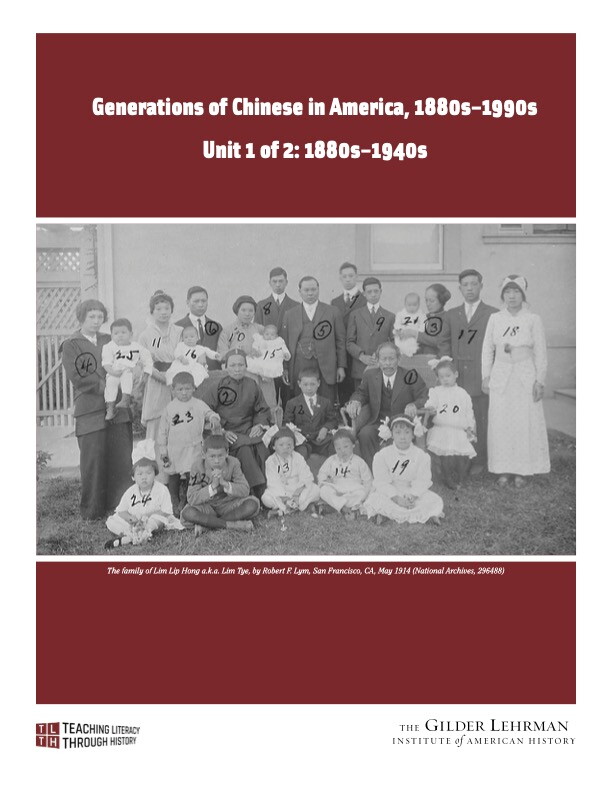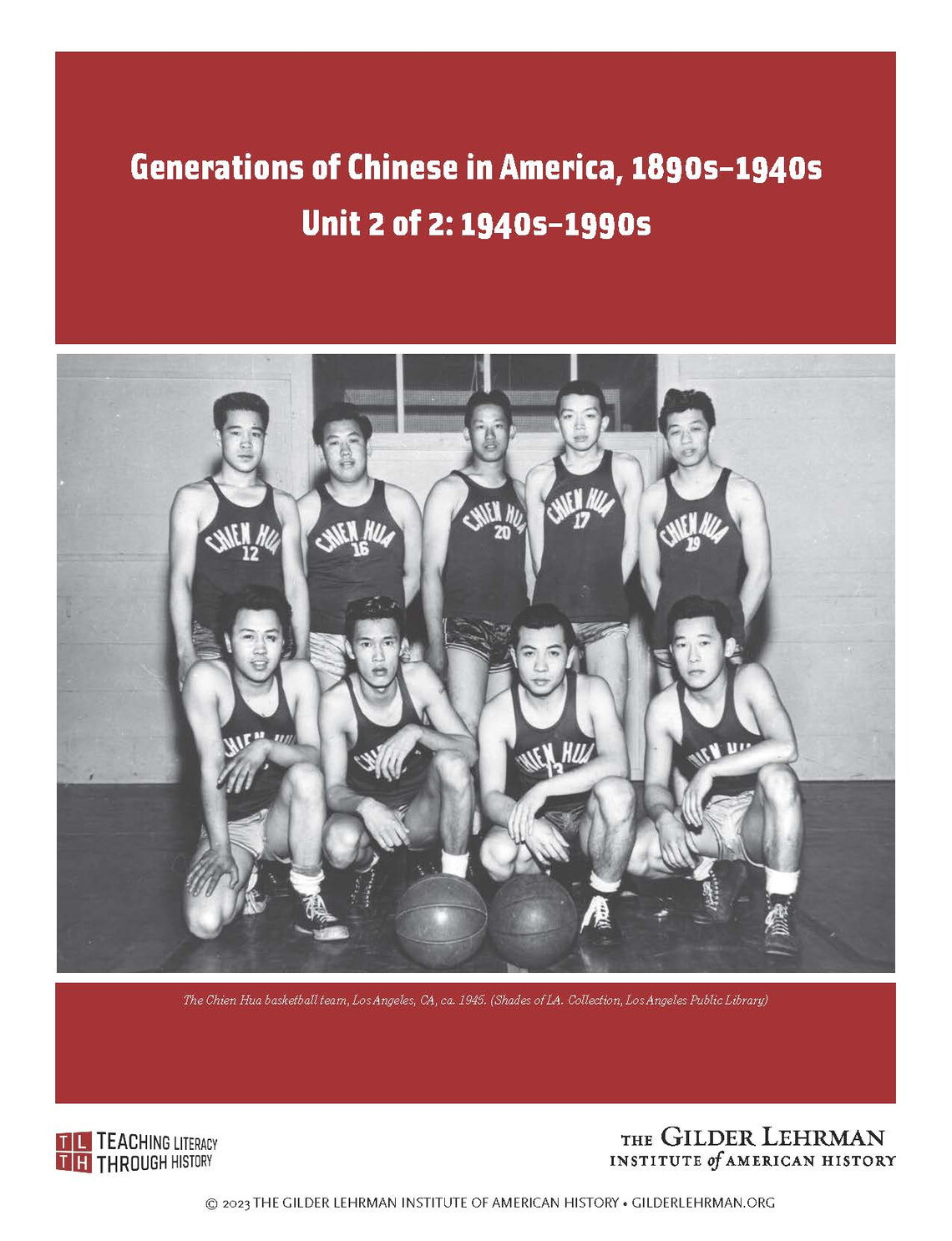Lesson by Nina Wohl
Essay by Jane Hong, Occidental College, and Madeline Hsu, University of Maryland, College Park
Grade Level: 7–12
Number of Class Periods: 3
Primary Theme: Immigration and Migration, Asian American History


This unit explores how the different generations of Chinese in America made the US their home despite racism and exclusionary governmental practices. The lessons in this unit provide a small window into a much broader and more complex area of study. They are not meant to capture the entire scope of this topic or time period. The individual lessons are not in chronological order but follow a thematic and pedagogical path. You may choose to use all or portions of the lesson materials. Over the course of six lessons in three days, students will identify, examine, and analyze the language and imagery of primary sources related to Chinese in America. Students will work with a variety of documents including first-hand accounts, photographs, opinion pieces, and government documents.
Lesson Plan Author: Nina Wohl
Historical Background Essay by: Jane Hong, Occidental College
This unit explores the impact the repeal of the Chinese Exclusion Act and the passage of the Immigration and Nationality Act of 1965 (Hart-Celler Act) had on the lives of Chinese people in the United States. In particular, it explores how Chinese and Chinese American people built and maintained communities. The lessons in this unit provide a small window into a much broader and more complex area of study. While the lessons and material cover a variety of primary and secondary sources, they are not meant to capture the entire scope of this topic or time period. You may choose to use all or portions of the lesson materials. Over the course of six lessons, students will identify, examine, and analyze the language and imagery of primary sources related to Chinese people in America. They will work with a variety of documents that include autobiography, photographs, and oral history.
Lesson Plan Author: Nina Wohl
Historical Background Essay by: Madeline Hsu, University of Maryland, College Park
CCSS.ELA-LITERACY.RH.11-12.1: Cite specific textual evidence to support analysis of primary and secondary sources, connecting insights gained from specific details to an understanding of the text as a whole.
CCSS.ELA-LITERACY.RH.11-12.2: Determine the central ideas or information of a primary or secondary source: provide an accurate summary that makes clear the relationships among the key details and ideas.
CCSS.ELA-LITERACY.RH.11-12.9: Integrate information from diverse sources, both primary and secondary, into a coherent understanding of an idea or event, noting discrepancies among sources.
CCSS.ELA-LITERACY.RH.11-12.7: Integrate and evaluate multiple sources of information presented in diverse formats and media (eg, visually, quantitatively, as well as in words) in order to address a question or solve a problem.
CCSS.ELA-LITERACY.SL.9-10.1.C: Propel conversations by posing and responding to questions that relate the current discussion to broader themes or larger ideas; actively incorporate others into the discussion to broader themes or larger ideas; actively incorporate others into the discussion; and clarify, verify, or challenge ideas and conclusions.
CCSS.ELA-LITERACY.SL.11-12.1: Initiate and participate effectively in a range of collaborative discussions (one-on-one, in groups, and teacher-led) with diverse partners on [grade-level] topics, texts, and issues, building on others’ ideas and expressing their own clearly and persuasively.
CCSS.ELA-LITERACY.W.9-10.1 and 11-12.1: Write arguments to support claims in an analysis of substantive topics or texts, using valid reasoning and relevant and sufficient evidence.
How were Chinese in America affected by changing immigration laws?
How did Chinese in America respond to exclusion?
What opportunities for continuity and change did Chinese immigrants seize?
How did the passage of the Immigration and Nationality Act of 1965 (Hart-Celler Act) and other legislation that eased obstacles to immigration change the Chinese American community?
What opportunities for continuity and change did Chinese immigrants and their descendants seize?
Lee Chew, “The Biography of a Chinaman,” The Independent 55, no. 2829 (February 19, 1903)
Photograph of Sue Chung Kee’s Store in Hanford, California’s China Alley, 1899
Photograph of Officers of the Six Companies, Chinatown, San Francisco, CA, ca. 1900
Photograph of Multi-Generation Family of Lim Lip Hong aka Lim Tye, by Robert F Lym, San Francisco, CA, May 1914
Saum Song Bo, “A Chinese View of the Statue of Liberty,” June 30, 1885
Soo Hoo Lem Kong’s Declaration to Enter the United States, 1930
Transcript of Soo Hoo Lem Kong’s Interview to Enter the United States, 1930
Jade Snow Wong, Fifth Chinese Daughter, 2019
Photograph of the Chien Hua Basketball Team, Los Angeles, CA, ca. 1945
Photograph of Americanized Chinese Gals on Mott St, by Ed Ford, New York, NY, April 27, 1965
Photograph of the Chin Family in Sam Wah Laundry on Creston Street in the Bronx, November 1952
Shiree Teng, “Women, Community, and Equality: Three Garment Workers Speak Out,” 1983